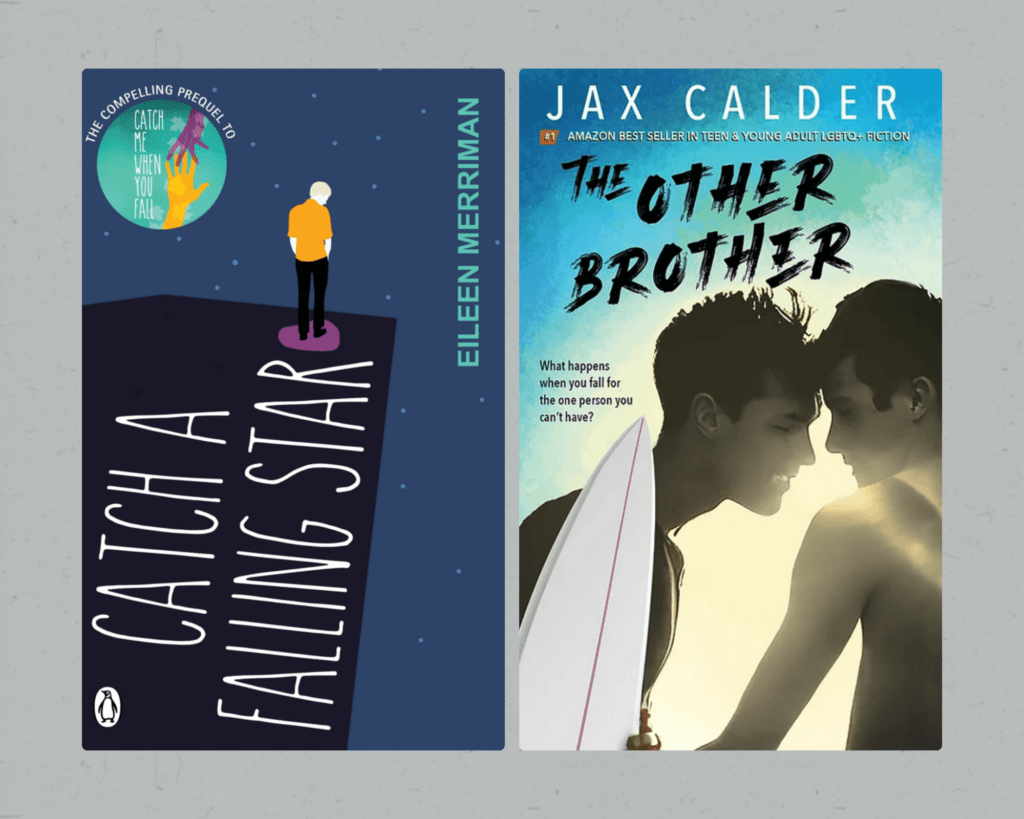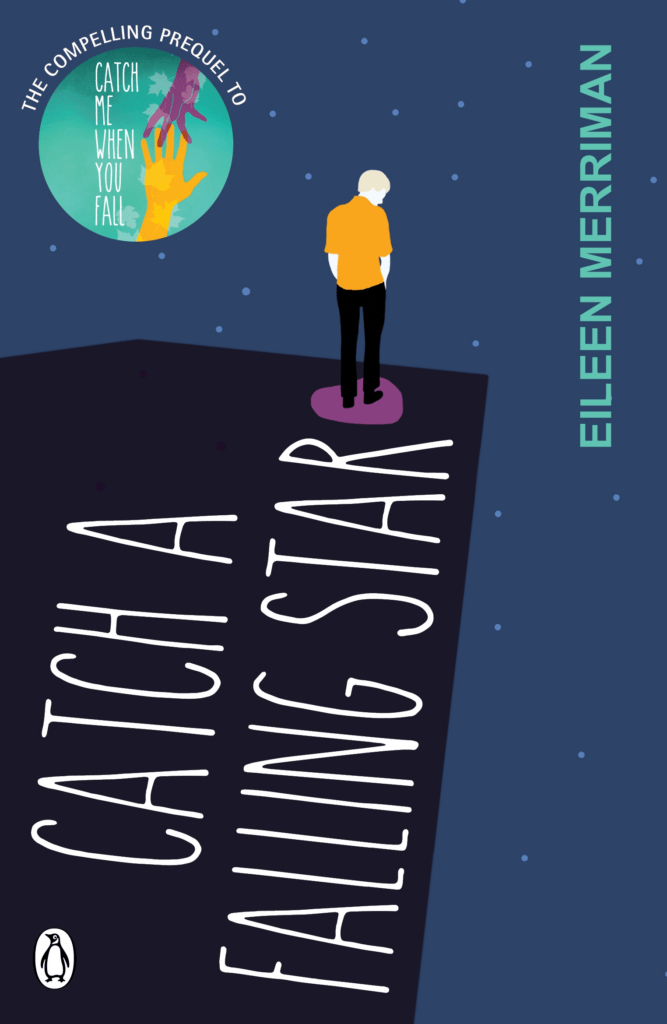18-year-old Stella Weston finds lots to rave about with two new gritty and complex YA novels that explore themes of mental health, budding relationships, and complex family dynamics.

Catching A Falling Star, by Eileen Merriman
Catch a Falling Star, expertly written by Eileen Merriman as a prequel to the highly regarded Catch Me When You Fall, had me in tears. This book is well-written, with language and plot that are easy to digest, but with themes that are anything but. I will admit that I have not read the sequel, but once I have composed myself, I absolutely will.
Catch a Falling Star follows the spiralling descent into psychosis of 15-year-old Jamie Orange. As Jamie struggles with having to wait to hold his girlfriend’s hand, and how to deal with his parents’ divorce, what scene should come next in his musical and his novel and his essay, and what he should and shouldn’t think about, it becomes clear to the reader that our beloved protagonist is seriously not all right. The characters are real, they make mistakes, and they say the things we have said, the things we wish we had said, and the things we wish we hadn’t.
Catch a Falling Star, expertly written by Eileen Merriman as a prequel to the highly regarded Catch Me When You Fall, had me in tears
Throughout the story are characteristics specific to Aotearoa/New Zealand. These hints are so carefully placed and described that they become recognisable enough to locals, without forcing a sense of exclusion on the oblivious reader who didn’t grow up there.
The realistic imagery and descriptions build authenticity to the story, especially the precise and truthful descriptions of struggles with mental health, something that so many readers can relate to in some way. The fast pacing of the story works in two ways—it makes the novel easy to devour, but it also reflects the pace of Jamie’s thoughts and how tiring it is for him to try and keep on top of his racing mind, as even the reader struggles to keep up.
The realistic imagery and descriptions build authenticity to the story, especially the precise and truthful descriptions of struggles with mental health
While there are a range of themes in this book, the main ones centre around struggles with mental health. This is tackled incredibly well for a book aimed at younger teenagers, dealing with these problems gently and yet without sugar-coating. This book is also about growing up and the differences between adult problems and kid problems. Reading this novel as an 18-year-old, I felt for a lot of the time that the problems Jamie was most worried about—telling his girlfriend he loved her after a few weeks of secret dating and writing excellent essays—were trivial. This gave me a sick sense of elitism, until all of a sudden the focus changed from these problems to much much bigger ones that kids shouldn’t have to deal with, and yet they have to, as we all do. Jamie makes the small things big and the big things small, just as younger people see the world in bite-sized pieces.
For slightly older readers who read All the Bright Places, Catch a Falling Star has a lot of the same realness and relatability and explores similar themes, but does so in a slightly more accessible way
If you enjoyed Eileen Merriman’s other books, such as Invisibly Breathing, I would absolutely recommend this book as it is written in much the same style and deals with similarly huge issues in manageable ways. For slightly older readers who read All the Bright Places, Catch a Falling Star has a lot of the same realness and relatability and explores similar themes, but does so in a slightly more accessible way.
There are a few brief sexual scenes, and while there are definitely some potentially triggering themes of mental illness, sexual assault, and suicide, I think this book is hugely important and I would recommend it.

The Other Brother, by Jax Calder
The Other Brother by Jax Calder perfectly encapsulates the ideal teenage summer and flavours it with the harder parts of teenage life. Centred around the slow-burn, angsty relationship of Cody and Ryan, two teenage boys with a complicated family dynamic, this book will make you consider your perception of teenage friendships, relationships, and family dynamics.
The Other Brother is a feel-good novel clearly set in New Zealand without overdoing the specific references to our country. The general settings, the summer beach house and the public high school, as well as hometown life as a teenager, are very well described and therefore easily imaginable and relevant to readers.
The Other Brother perfectly encapsulates the ideal teenage summer and flavours it with the harder parts of teenage life
The characters are well fleshed-out throughout the book, and their behaviour is almost predictable because the reader feels that we know them on some level. Cody and Ryan are loveable and develop beautifully as the novel progresses, providing the audience with satisfying character and relationship arcs.
The entire novel revolves around a range of relationships, which hold up under this pressure and prove to be well thought-out and consistent. The most central relationship is obviously between Cody and Ryan, and this develops slowly from animosity to an impossible crush to something bigger than that. This average teenage love story is complicated and brought to a whole other level by the family dynamics involved. I will admit that the half-brother situation did slightly put me off this book; however, it is repeatedly made clear that they are not blood relatives, and once I accepted it there was no real issue. Instead, this added layer creates a deeper and more meaningful story as Calder explores the complications of family, especially dealing with divorce.
This average teenage love story is complicated and brought to a whole other level by the family dynamics involved
Themes run throughout this story such as the difficulty of love in the face of adversity, especially teenage love and how important it is, yet how dismissive people can be of your feelings when you are young. The other teenage problems portrayed are also hugely relatable for younger audiences, such as issues in friendships and family relationships, pressures of expectations, and the struggle to be yourself while going through the teenage years—a time of changing personalities and trying to find the best version of yourself.
While there is not a lot of poetic language used, this helps make The Other Brother an easy read. The narration by the main character, Ryan, rings true to the teenage vibe the novel is striving for and also adds to the image of his laid-back and relaxed character. The backstory is well-defined and woven through the first part of the book to provide enough foundational structure to get the audience invested and help them understand the various dynamics at play. This foundation also provides foreshadowing for an unexpected twist at the climax of the novel.
The narration by the main character, Ryan, rings true to the teenage vibe the novel is striving for and also adds to the image of his laid-back and relaxed character
If you like YA such as The Sun is Also a Star, The Perks of Being a Wallflower, and The Fault in Our Stars—stories centred around teenage life and love—and want something with a similar vibe but with less tragedy and more of a feel-good story, this book is perfect. There are very brief descriptions of sexual actions and mild swearing at times, but I would recommend it for anyone aged 12 and up who enjoys a warm, slightly angsty teenage love story.

Stella Weston
Stella Weston is a Year Thirteen student at Rotorua Lakes High School. She has been writing for as long as she can remember and has been published several times and had multiple stories place in short story competitions. She has recently been awarded a NZSA Youth Mentorship and is looking forward to seeing where this takes her. Stella is also a competitive swimmer and a leader at her school.




